These terms are confusing and often misused so let’s explain these terms once and for all.
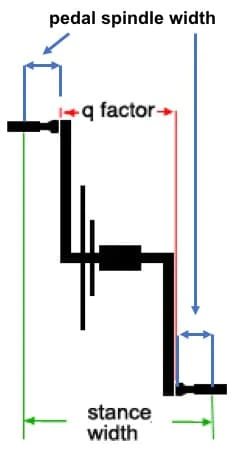
Q-Factor
The Quack-Factor, commonly known as the Q-Factor, is also called “crank width”. It is the width measured between the outside surfaces of the cranks (where the pedals lock onto). This dimension you cannot change without investing in a new crankset with a different Q-Factor.
For example, the Shimano Ultegra Crankset FC-R8000 has a Q-Factor of 146mm while the new FC-R8100’s Q-Factor has been increased to 148mm. SRAM offers a standard 145mm or a wide 150mm Q-Factor on their Rival crankset. If you are thinking of buying a SRAM groupset for your bike, consider the wide option for an extra width of 2.5mm per side.
Pedal Spindle Width
Before talking about the Stance Width, we need to discuss Pedal Spindle Width. The Pedal Spindle Width is the distance between the centre of the pedal and the outside of the crank arm. This varies with the type of pedals you are using.
You can see in the table below that the pedal width can vary from 52mm (Dura-Ace) to 67mm (Speedplay) – an extra 15mm per side (30mm in total). You would have to buy new pedals and cleats to increase the width but it is worth considering. Bear in mind that the Speedplay pedals may not be the ideal option for you so you may want to look at an alternative way to increase the stance instead.

Stance Width
The Stance Width is the distance from the centre of a pedal to the centre of the other pedal. You can easily calculate your stance:
Stance Width = Q-Factor + (2 x Pedal Spindle Width)
For example, if you have an Ultegra FC-R8100 crankset with Shimano Ultegra pedals, you have a stance width of 254mm [148 + (2 x 53)].
What about the foot?
Now that we have clarified all of the dimensions that refer to the location of the pedal, let’s talk about the foot. Your foot is in your cycling shoes with a set of cleats mounted below them. While the centre of the cleat will always be aligned with the centre of the pedal, the centre of your foot is not necessarily in the centre of the pedal. For example, on a set of SPD-SL cleats, you have about 5 to 6mm of lateral movement (this is reduced if the cleat is rotated to accommodate for the rotation of the foot). This “play” means that we can increase or decrease the width between the centre of one foot to the centre of the other foot. Let’s call this measurement the “Foot Stance Width“.
Foot Stance Width
This is the measurement that actually maters. All the dimensions we discussed previously are only here to change this one, and to make sure you have a nice vertical alignment between the knee and the foot. It is probably hard to do on your own but any decent bike fitter will get this done accurately.
Why would you adjust the Foot Stance Width?
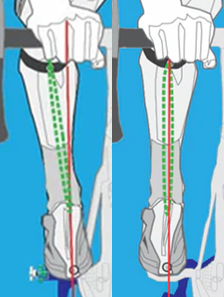
A wrong stance width causes unnecessary stress on the knee and often leads to pain. This is a consequence of a bad alignment between the knee and the foot. The aim is to align the centre of the foot and the centre of the knee at the top of the pedal stroke.
At the top of the pedal stroke, draw a vertical line from the centre of your foot – the best way is to use a laser. This line needs to pass through the middle of the knee. If the knee tracks to the inside of the line (called medial), you need to reduce the Foot Stance Width and if the knee tracks to the outide of the line (called lateral), you need to increase it. Modify the Foot Stance Width until the centre of the foot and the centre of the knee are aligned.
So, now that we have all the theory and a process, let’s look at the options available to cahnge your Foot Stance Width.
How can you adjust the Foot Stance Width?
So, now that all these terms are defined, let’s look at the options available to correctly setup your Foot Stance Width.
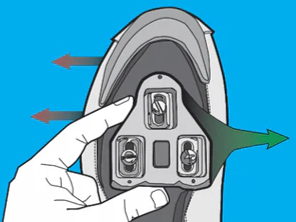
Cleat Medial-Lateral
The first point of call is to adjust the cleat medial/lateral position to match the required foot stance width. As a rule of thumb, slide the cleat all the way to the inside of the shoe (moving the cleat to the inside of the shoe moves the away from the bike).
Pedal Washers
If this is still not enough, the second option is to use pedal washer (often 2mm thick). With most sets of pedals, you can only use one washer max per pedal. If you have LOOK pedals, you can use up to 2 washers as the thread is 2mm longer. You can therefore get an extra 2mm per foot with most pedal brands and an extra 4mm per foot with LOOK pedals.
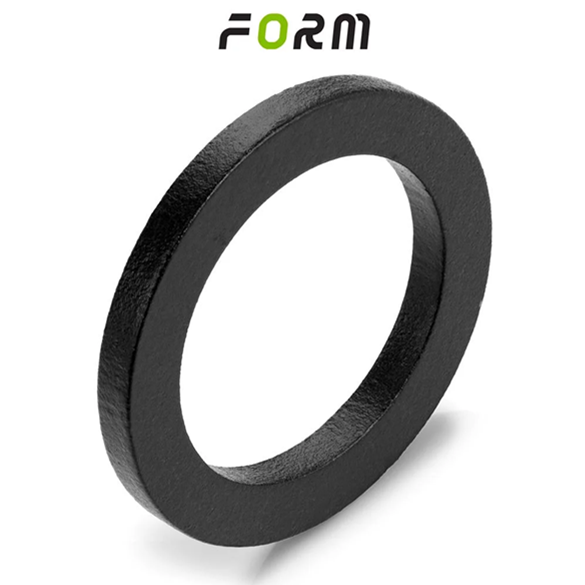
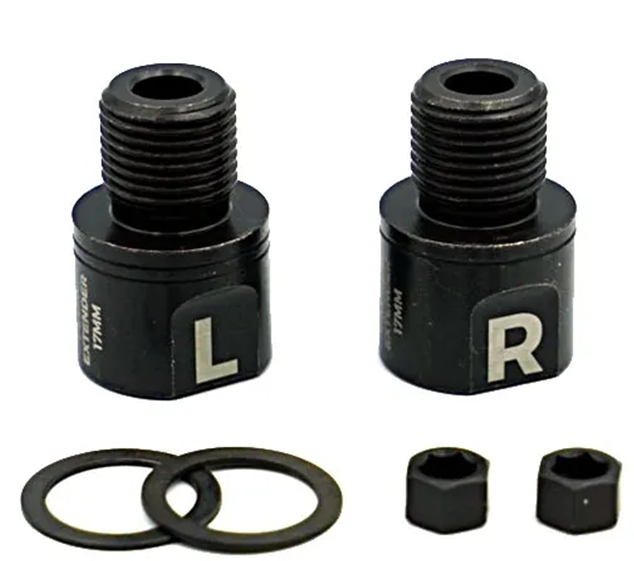
Pedal Extenders
Pedal extenders are spacers measuring between 17mm and 20mm (depending on the brands) that you can fit between the cranks and the pedals. They increase the Stance Width on each pedal by the width of the spacer. This is the biggest Stance Width increase available.
WARNING – Check the extenders are compatible with your pedals!
Pedal Spindle Width
Last option and probably the most expensive one: new set of pedals with a longer Pedal Spindle Width such as the Shimano with +4mm axle or Speedplay* with up to 12mm extra spindle length. SQlab also provides 2-bolt SPD compatible and 3-bolt Look KEO compatible pedals in different spindle lengths resulting in a pedal centre dimension from 48 to 69mm. As I said previously, while the longer spindle is a great way of increasing the Foot Stance Width, it may not be the best option for you.
*I would recommend using other options mentioned above before changing to Speedplay pedals.
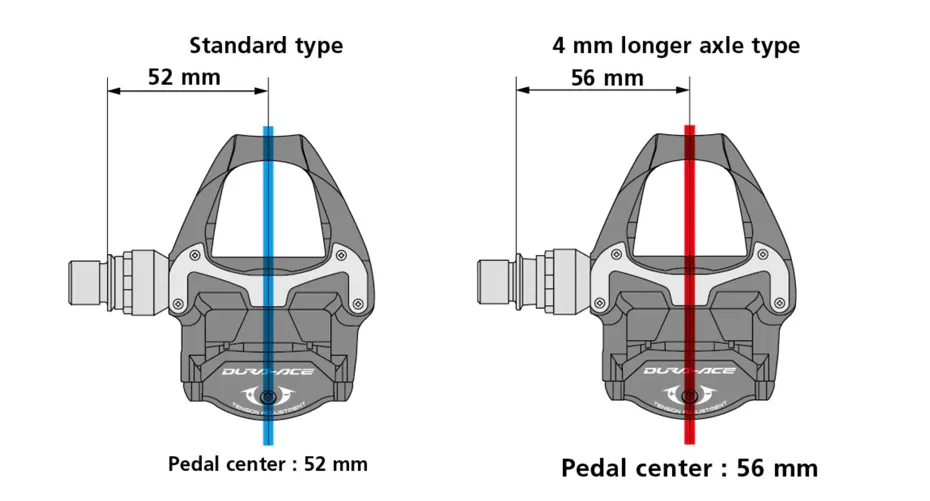
Pictures from https://bikefit.com/



Leave a Reply